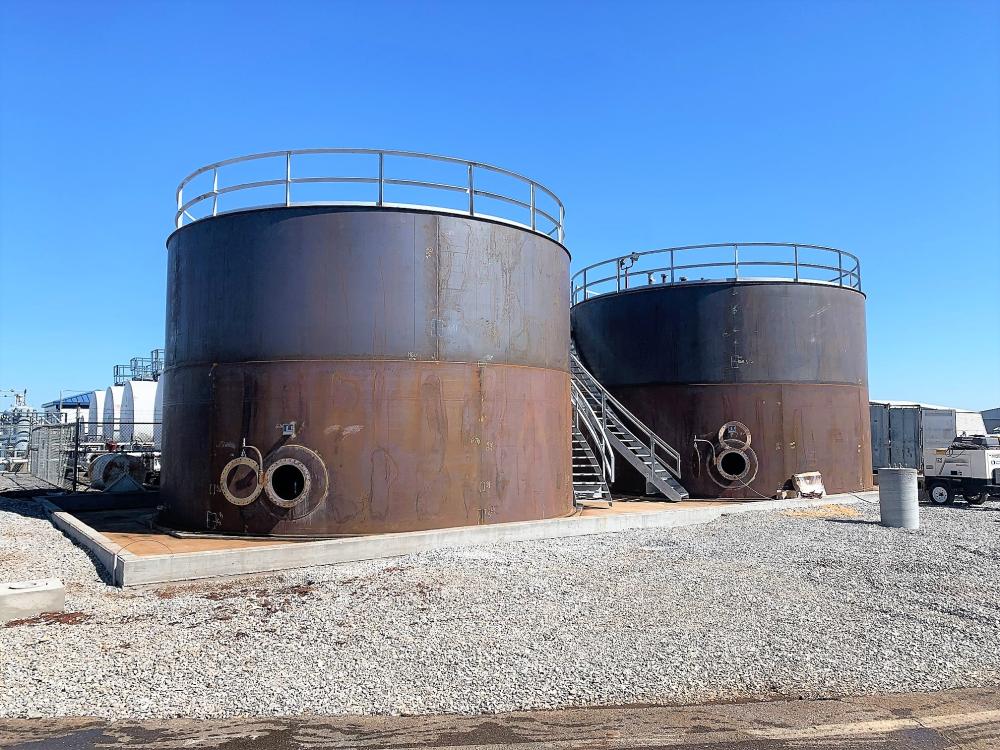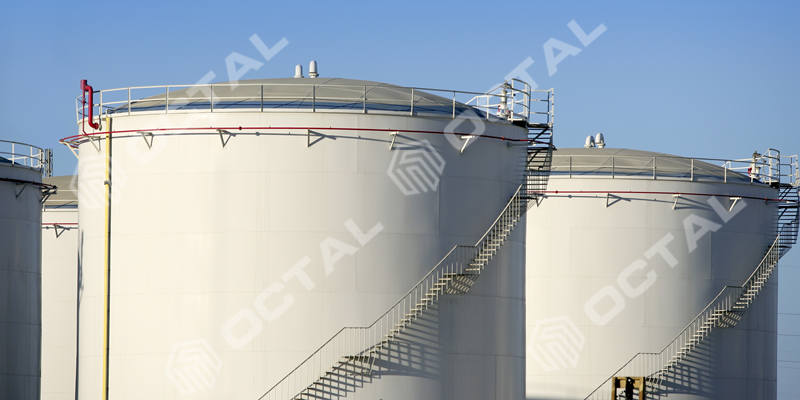Getting Familiar With API 650 Welding Inspection and Its Role in Weld Reliability
Just How Welding Inspection Works: A Comprehensive Guide for Professionals
Welding inspection plays a vital duty in making certain the safety and dependability of welded structures. It entails an organized technique that includes both aesthetic assessment and progressed screening approaches. Specialists must familiarize themselves with crucial standards and guidelines regulating the sector. Comprehending the typical problems that can arise throughout welding is vital. This overview will certainly explore these elements thoroughly, giving understandings into the processes that copyright high quality and stability in welding.
Understanding the Relevance of Welding Examination
While numerous might underestimate the importance of welding evaluation, it plays an essential function in ensuring the stability and safety and security of welded structures. Efficient welding assessment identifies potential flaws and imperfections that can compromise structural strength and result in devastating failings. The inspection process encompasses various techniques, such as aesthetic evaluations, ultrasonic screening, and radiographic evaluations, each adding to the overall evaluation of weld quality.
Along with guarding the architectural integrity, welding evaluation assures compliance with industry standards and customer specs. By guaranteeing that welds fulfill called for attributes and tolerances, examinations help maintain the reliability and durability of elements in different applications, from building and construction to aerospace. Additionally, a strenuous evaluation procedure fosters a culture of quality and responsibility among welders and producers. Inevitably, welding inspection is not merely a step-by-step action; it is an essential technique that underpins the safety and performance of engineered systems across varied sectors.
Secret Requirements and Regulations in Welding Inspection
The foundation of efficient welding inspection rests on adherence to developed criteria and regulations. Various organizations, such as the American Welding Culture (AWS) and the American National Requirement Institute (ANSI), established forth standards that assure quality and safety and security in welding methods. Secret standards, such as AWS D1.1 for architectural welding and ASME Area IX for stress vessels, give thorough requirements for welding assessments, treatments, and qualifications. Regulative frameworks, consisting of those from the Occupational Safety And Security and Health And Wellness Management (OSHA), mandate safety and security practices and employee securities in welding atmospheres. Conformity with these criteria is crucial for achieving regular weld high quality and minimizing the threat of failings. Additionally, worldwide standards like ISO 3834 additionally boost international uniformity in welding examination methods. Specialists have to stay informed regarding these laws to assure that their evaluation techniques straighten with sector expectations and legal demands, consequently protecting both personnel and architectural integrity.
Preliminary Prep Work and Aesthetic Assessment Techniques

Reliable welding examination begins with a comprehensive pre-inspection list that ensures all required problems are satisfied prior to the real evaluation happens. Following this preparation, visual flaw recognition plays an essential duty in evaluating weld high quality, allowing assessors to spot problems such as fractures or incorrect combination. Together, these techniques form the foundation for an effective welding inspection procedure.
Pre-Inspection Checklist
Before beginning any kind of welding assessment, a complete pre-inspection checklist is important to assure that all necessary preparations are completed and that visual assessment strategies are properly used. Secret components of this list consist of verifying the welding procedure requirements (WPS), making sure all equipment is calibrated and in excellent working condition, and validating that the inspector possesses the needed qualifications. Furthermore, it is essential to review any kind of previous evaluation reports and to evaluate the workplace for security hazards. The assessor must likewise verify that all appropriate paperwork, such as material certifications and assessment records, is easily available. Completing this checklist helps to develop a solid structure for an effective examination process, enhancing the integrity of the outcomes acquired.
Visual Defect Identification
A successful visual defect identification procedure begins with cautious initial preparation and the application of well established aesthetic assessment strategies. Inspectors ought to guarantee that the welding area is well-lit and tidy, as adequate presence is essential for identifying problems. A thorough evaluation of the weld joint's surface enables for the recognition of discontinuities, such as splits, damages, or porosity. Examiners usually utilize tools like multiplying glasses or mirrors to enhance their sight of hard-to-reach locations. Furthermore, they must know with the details welding requirements and standards appropriate to the task. By adhering to these methods, inspectors can efficiently identify possible issues, securing the stability of the weld and conformity with market standards.
Non-Destructive Screening Approaches: A Summary
Non-destructive testing (NDT) methods play an important function in the welding assessment process by making sure the stability and dependability of bonded structures without creating any kind of damages (API 650 Welding Inspection). These techniques allow inspectors to assess the top quality of welds while protecting the elements being checked out. Typical NDT approaches include ultrasonic testing, radiographic testing, magnetic fragment screening, and dye penetrant testing, each offering one-of-a-kind benefits
Ultrasonic testing employs high-frequency acoustic waves to identify interior imperfections, while radiographic screening uses X-rays or gamma rays to imagine the inner framework of welds. Magnetic fragment testing exposes surface area and near-surface problems by using a magnetic area and iron fragments to the weld area. Dye penetrant screening highlights surface-breaking imperfections through the application of a colored dye. With each other, these NDT techniques give important insights into weld high quality, making it possible for experts to make informed decisions pertaining to safety and compliance in welding applications.
Common Problems and Their Effects
Determining common problems in welded joints is important for preserving architectural integrity and safety. Various defects can develop throughout the welding process, each bring potential effects for the general efficiency of the structure. Porosity, characterized by small gas pockets within the weld, can deteriorate the joint and compromise its load-bearing capability. Fractures may establish as a result of thermal tension or improper air conditioning, bring about possible failure under anxiety. Insufficient fusion occurs when the weld steel does not completely bond with the base material, resulting in weak joints that may not endure desired tons. Damaging, where the base metal is deteriorated, can additionally minimize the efficient cross-section of the weld. Furthermore, extreme support can produce anxiety focus that can bring about failing. Acknowledging these flaws quickly permits rehabilitative procedures, making sure the long life and integrity of bonded frameworks in crucial applications.
Tools and Equipment Made Use Of in Welding Examination
Efficient welding inspection depends on a selection of specialized tools and equipment to assure the quality and integrity of important source welded joints. Essential instruments include aesthetic evaluation tools, such as amplifying borescopes and glasses, which permit assessors to very closely take a look at welds for surface issues. Non-destructive screening (NDT) techniques, such as ultrasonic screening, radiographic testing, and magnetic bit testing, are essential for identifying interior why not try this out problems without damaging the product.
Measurement devices, consisting of calipers and weld gauges, assist evaluate dimensions and determine compliance with specs. Furthermore, hardness testers examine the mechanical buildings of welded joints. Personal safety equipment (PPE) is additionally critical, safeguarding the safety and security of examiners while operating in possibly dangerous atmospheres (API 650 Welding Inspection). Each tool offers a particular objective, jointly boosting the efficiency of welding inspection and adding to the reliability of completed projects
Frequently Asked Inquiries
What Certifications Are Needed to Come To Be a Welding Inspector?
To come to be a welding examiner, people typically need relevant accreditations, such as AWS CWI or CSWIP, in addition to experience in welding procedures, design principles, and knowledge of inspection strategies, safety and security requirements, and suitable codes.
Exactly How Often Should Welding Inspections Be Conducted?
Welding assessments must be conducted on a regular basis, preferably at numerous project phases, including pre-weld, during-weld, and post-weld. Regularity may additionally depend upon industry requirements, project specs, and the intricacy of the welds included.
Can Welding Defects Be Repaired After Examination?

Yes, welding flaws can commonly be fixed after evaluation. Depending on the seriousness and kind of problem, suitable methods such as remodeling or added welding might be used to recover structural stability and safety and security conformity.
What Industries Require Routine Welding Examinations?

Different markets, including construction, manufacturing, aerospace, and vehicle, require routine welding examinations - API 650 Welding Inspection. These inspections assure adherence to safety criteria and quality assurance, lessening threats related to architectural honesty and functional performance in bonded parts
How Do I Choose a Welding Evaluation Solution?
To choose a welding examination service, one need to take into consideration credentials, experience, accreditations, and industry online reputation. Furthermore, evaluating client reviews and guaranteeing the service meets relevant criteria can assist ensure high quality inspections and reputable results.

While many might undervalue the significance of welding evaluation, it plays a necessary function in ensuring the integrity and security of bonded frameworks. Secret criteria, such as AWS D1.1 for architectural welding and ASME Area IX for stress vessels, offer thorough requirements for welding inspections, qualifications, and procedures. Effective welding inspection begins with a thorough pre-inspection checklist that ensures all needed conditions are met prior to the actual inspection takes place. Before beginning any kind of welding assessment, an extensive pre-inspection checklist is crucial to assure that all necessary prep work are completed and that company website aesthetic examination strategies are efficiently employed. Non-destructive screening (NDT) approaches play an essential role in the welding inspection process by guaranteeing the integrity and integrity of welded structures without creating any type of damages.